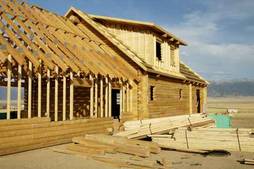 Harvested Wood Products (HWPs) are wood-based materials harvested from forests, which are used for products such as furniture, plywood, paper and paper-like products, or for energy. Wood products contribute to mitigating climate change through (1) forming a storage pool of wood-based carbon and (2) substituting environmentally damaging sources of material and energy such as fossil fuels.
Harvested Wood Products (HWPs) are wood-based materials harvested from forests, which are used for products such as furniture, plywood, paper and paper-like products, or for energy. Wood products contribute to mitigating climate change through (1) forming a storage pool of wood-based carbon and (2) substituting environmentally damaging sources of material and energy such as fossil fuels.Harvested timber is converted into a wide variety of wood products. Their carbon content moves through different levels during their life cycle. After their use, products are sometimes recycled, and ultimately burned or deposited in landfills where they slowly decay. The carbon stored in wood, which was initially captured from the atmosphere, is finally released back into the atmosphere. Changing the demand for wood products can consequently have an important role in the global carbon cycle and the fight against climate change.
Incentives to increase the use of HWP are implicitly provided in the Kyoto Protocol, as substituting fossil fuels with wood –based fuels and energy intensive materials with wood-based products is a mean to reduce carbon dioxide emissions. However, carbon stock changes in HWP are not accounted for in the Kyoto Protocol. If HWP were accounted for in the post-Kyoto agreement, to be decided in December 2009 in Copenhaguen, countries choosing to account for HWP would have to be cautious not to compromise sustainable forest management .
For more information
- Workshop on Harvested Wood Products in the Context of Climate Change Policies, 9-10 September 2008, Geneva.
Background paper on Challenges and Opportunities of accounting for harvested wood products (2008)
- Policy Dialogue on Potential Sustainable Wood Supply in Europe, October 2008, Rome.
Study on Potential Sustainable Wood Supply in Europe (2008)


